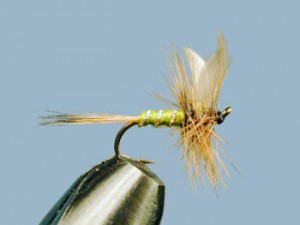 Dry Flies
Dry Flies
Dry trout flies are probably the most traditional, in most fisherman’s eyes, (although wet fishing goes back much further) This method is basically deceiving the trout into believing this is their natural food which they readily eat from the surface. Most fly fisherman say it’s the hardest method as opposed to perhaps lure fishing, but I don’t go with that theory. A simple technique of floating the fly along the surface means you can see exactly where your fly is and usually you will see the fish approaching. Avoid any drag using this method of fishing as it will look unnatural to the trout, just cast upstream and allow the fly to drift with the current, always cast diagonal to avoid scaring away any fish.
Select your dry fly to mimic the insect life around you, matching the hatch is quite easy if you take some time to observe which flies are around and if indeed the trout are rising out of the water to take them. If you do not see the trout rising then it is likely they are feeding subsurface and therefore a different method is required.
Dry flies should be delicate generally winged although there are many without wings.
Use a floatant with the dry fly such as Geherkes Gink, this will keep the fly on the surface and prevent it getting water logged.
Use a light weight line, fish have good eye sight, a smaller rod for dry fly fishing is preferred as you will not really be making long casts
